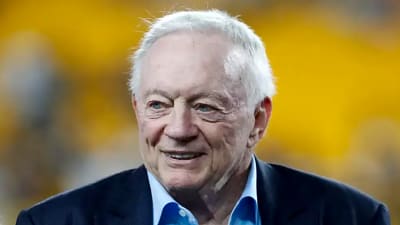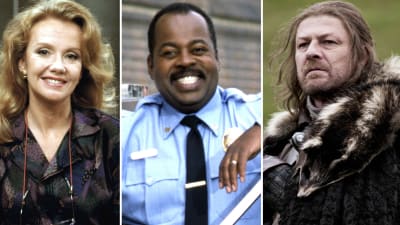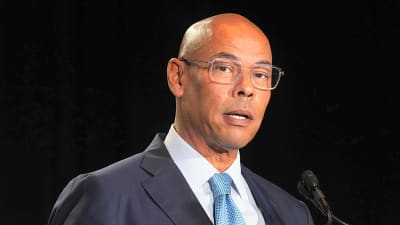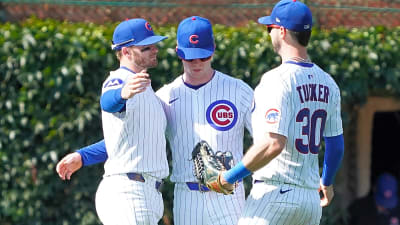Today, we premiere a new series from writer Elizabeth Martiniak. Horse racing often focuses on there here and now when it comes to equine stars, and we remember the all-time greats, like Man o' War and Babe Ruth, but there are colorful individuals who made contributions in some way or another, maybe are even Hall of Fame members, but they are just not remembered. Secretariat will always be remembered. But, for example, Maskette is in the Hall of Fame, yet only hardcore fans would know who she was. Lest We Forget is an attempt to bring out of the mists of time those horses who were very interesting or great in their day, but we don't think of them now.
Man o’ War is revered by horse racing fans as perhaps the greatest American Thoroughbred of all time. The magnificent chestnut son of Fair Play and the Rock Sand mare Mahubah was defeated only once in 21 lifetime starts and went on to become a very influential sire. Lost to memory, though, in the more than ten decades since his birth, is the name of Man o’ War’s year younger full brother, a strapping bay named Playfellow.
Playfellow had the breeding, looks, and raw talent to be any kind of horse. But he became a pawn in a chess game of money and egos that rendered his racing career all but moot and left the name of Playfellow long lost in the history of racing lore.
Playfellow was bred by Major August Belmont and foaled at his Nursery Stud near Lexington, Ky., in the spring of 1918. At the time, the yearling Man o’ War was still months away from selling at the Fasig-Tipton yearling sale at Saratoga and over a year away from the beginning of his racing career. When Man o’ War did step into the sales ring at Saratoga that summer of 1918, he was purchased for $5,000 by trainer Louis Feustel for owner Samuel D. Riddle. What is less well-known is that one of the underbidders was a successful trainer who had yet to scale the heights of his fame – ”Sunny” Jim Fitzsimmons, acting on behalf of the master of Quincy Stable, James F. Johnson. “Sunny” Jim, without his principal client present to OK the ever increasing bids, decided to stop bidding when it became clear the colt would go for at least $5,000.
By the next summer, Man o’ War was well on his way to his superlative racing career. Once again in the sales pavilion at Saratoga, a son of Fair Play and Mahubah was sent in. A big, rangy bay colt with a star, the young colt immediately attracted the attention of “Sunny” Jim, who got him for the much more reasonable price of $1,800.
Named Playfellow, he went into training with high expectations and excitement from the people who formed his team. Unlike older brother Man o’ War, Playfellow was backward both mentally and physically as a juvenile and failed to win in nine starts. Playfellow earned a mere $800 and became the butt of cruel jokes. A winter of physical and mental growth proved pivotal, and early in his 3-year-old campaign, Playfellow began showing in his works a sparkle that had been noticeably absent before. On June 1, 1920, Playfellow won his first race at Belmont Park. Fitzsimmons wheeled Playfellow right back again only four days later. Playfellow led all the way in the mile contest and stopped the timer in a dazzling 1:36 ⅘. Playfellow was making all the right moves in his development and “Sunny” Jim had great stakes hopes for his prize pupil.
The sensational victory proved a double-edged sword, as while Johnson and Fitzsimmons were savoring the colt’s victory, other owners with deep pockets soon gathered ‘round, anxiously hoping to snap up the promising younger brother to Man o’ War for their own stables.
There were three owners vying for Playfellow, including John E Madden, the master of Hamburg Place. In the end, the colt went for a staggering $100,000 to two titans of the American turf -- oilman Harry F. Sinclair, master of Rancocas Stable and his trainer, Samuel C. Hildreth. The latter had been training since the last part of the previous century and won major stakes for the likes of William Collins Whitney and August Belmont II. Hildreth had not only trained four Belmont Stakes winners, but he was familiar with Playfellow’s family, having previously trained the colt’s highly-strung full sister Masda and their dam, Mahubah.
Harry F. Sinclair had founded the Sinclair Consolidated Oil Corporation in 1916, and his wealth enabled him to purchase the fabled Rancocas Farm and racing stable in 1919 from Sarah Adeline “Lily” Barnes-Livingston, the former mistress of Pierre Lorillard IV, from whom she inherited Rancocas upon his death in 1901.
The chess game that was to overshadow the rest of Playfellow’s career was set. Harry F. Sinclair and Sam Hildreth versus James F. Johnson and “Sunny” Jim Fitzsimmons with Playfellow the pawn in the middle.
Naturally, Hildreth and Sinclair were expecting huge things from their six-figure investment. They were not prepared for a total reversal of form on Playfellow’s part.
Three straight losses, including a dismal last place finish in a three-horse race while Playfellow was clearly laboring proved enough for Sinclair. He and Hildreth promptly demanded the refund of the purchase price, angrily stating that Playfellow was a cribber and that the malady had affected his racetrack performance. Johnson flatly refused to refund Sinclair’s money, basically reminding Sinclair caveat emptor. Sinclair argued that Playfellow had been guaranteed to be free from vice at the time of purchase. Trainer Fitzsimmons maintained he had never witnessed Playfellow crib or suck wind.
As a youngster, Playfellow, like his elder brother Man o’ War, had displayed a tendency to bolt his food. Fitzsimmons remarked, “All he does is eat his oats, then his hay, and finally his bedding. I’m onto him now. I’ve put a muzzle on him to prevent his eating himself out of his home.”
Fitzsimmons did reveal that another groom had mentioned seeing Playfellow crib once, but Fitzsimmons had never himself witnessed it. To be safe, he fitted the colt with a perforated bit. Fitzsimmons discovered that Playfellow did not perform well with blinkers and resented the use of the whip. Though all this was relayed to his new trainer, Hildreth chose not to follow Fitzsimmons’s advice, nor did he follow Fitz’s precautions as to Playfellow’s undesirable eating habits.
The two sides met in court in December, 1921. Such was the intense interest in the case, the Brooklyn courtroom was at standing room only capacity. In a major surprise, the first trial ended in a mistrial, as the jury could not render a verdict. Sinclair continued his legal avenues, and in March, 1922, a second trial began.
Despite testimony from Fitzsimmons in the two trials that he had personally never witnessed Playfellow crib, the question remained as to whether owner Johnson had actually guaranteed Playfellow free from vice during the sales negotiations. With no clear answer, the jury erred on the side of Sinclair and rendered a verdict in his favor. Johnson was ordered to return the $100,000 purchase price.
Not surprisingly, Johnson appealed, but four months later, the verdict was upheld by the court of appeals.
What of Playfellow during this legal battle? Johnson would have nothing to do with his former horse and Sinclair refused to allow Playfellow to set foot on a racetrack as a Rancocas color bearer. The horse languished at Rancocas Farm in New Jersey, gaining weight and losing racing trim. Only Fitzsimmons showed concern for the colt he still believed in. Sadly, Fitzsimmons' suggestion -- that while the legal proceedings were going on, Johnson race the colt and give whatever purse money won to any charity either he or Sinclair chose to benefit -- was flatly rejected by both parties.
Playfellow eventually returned to the races for Johnson late in his 4-year-old season, but to no avail. After that brilliant victory in the spring of 1921, Playfellow never won another race. He retired with a record of two wins in 18 starts and a little over $4,300 in purse money.
Playfellow began his stud career at Emil Herz’s Short Grass Farm on Russell Cave Road near Lexington, only a short distance from where Man o’ War held court at Faraway Farm. Later, John E. Madden purchased Playfellow for his Hamburg Place, where he stood until November 1926, when Madden held a dispersal sale.
Playfellow, off to a promising start as a sire with Latonia Cup victress Ben Machree to his credit, topped the sale on the opening day, going for $62,000 to Daniel Cox Sands, Master of Fox Hounds and horse breeder at his Benton estate near Middleburg, Va.
Playfellow sired a number of winners, but just the one stakes winner. As a stallion in the heart of Virginia's horse and hunt country capital, Playfellow made contributions to that sport, showing up in several hunter/jumper pedigrees. Playfellow remained at Benton until his death at age 25 in May 1943.
James Johnson died in 1933. Sam Hildreth went on to train Kentucky Derby winner Zev and Belmont Stakes winners Grey Lag and Mad Hatter. Harry F. Sinclair became embroiled in the Teapot Dome oil lease scandal that rocked the presidency of Warren G. Harding. Sinclair was brought to trial for his part in the scandal, which ended in a mistrial. He was sentenced to a short prison term for witness tampering and, upon release, lived in luxury until his death in 1956.
As for “Sunny” Jim Fitzsimmons, the best of his career was yet to come, with such luminaries as Gallant Fox and Omaha, Granville, Johnstown, Vagrancy, Busanda, High Voltage, Misty Morn, Nashua, and Bold Ruler in his training future. Yet at his death in 1966 at the age of 91, we can imagine that if he had any unanswered questions from his career, they may include two "what ifs" -- what if he had succeeded in purchasing Man o’ War that summer night at Saratoga in 1918 and what if Playfellow had remained in his stable for his entire career? He had believed in Playfellow even when no one else had. If only...
Elizabeth Martiniak is a teacher's aide at an elementary school in Wisconsin. She is a livelong horse lover and knew the names of the original eight Triple Crown winners when she was six years old. Majestic Prince was the first Kentucky Derby she can remember. She has written numerous historical pieces on a freelance basis for over 30 years in The Blood Horse, The Thoroughbred Record, SPUR, and the Thoroughbred Heritage website, and also contributed eleven chapters for the book Great Thoroughbred Sires of the World, published in 2006.
More must-reads:
- Yankees' 'left-handed Aaron Judge' is primed for MLB call-up
- Wimbledon ladies' singles final a chance for redemption for Iga Swiatek
- The 'NFL Offensive Rookie of the Year winners' quiz
Breaking News
Trending News
Customize Your Newsletter
 +
+
Get the latest news and rumors, customized to your favorite sports and teams. Emailed daily. Always free!








